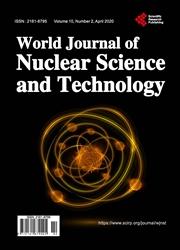X-Ray and Mössbauer Study of Magnetic Black Sand from Mayotte Island
引用次数: 1
Abstract
Natural magnetic black sands are known from several sites often located in areas of volcanic origin. Their elemental and mineral composition provides information on the geology of their territory and depends on several factors occurred during their formation. A sample of black sand was collected on the seashore of the island of Mayotte in the Indian Ocean and its magnetic part was investigated by means of energy dispersive X-ray spectroscopy (EDS), powder X-ray diffraction (XRD), and MOssbauer spectroscopy at room temperature. The mineral composition is dominantly magnetite, in good agreement with samples collected in other sites of volcanic origin. Contrary to pure magnetite, a relevant fraction of Ti was detected by EDS. The 16% Ti and 1% Mn content increase the magnetite lattice parameter to 8.4312 (25) A. The broadening of XRD lines pointed towards a significant degree of disorder. This was confirmed by MOssbauer spectroscopy and is attributed to the presence of Ti replacing Fe in the magnetite lattice. The presence of Ti modifies the local magnetic field on the Fe sites, leading to a broader and more complex MOssbauer transmission spectrum with respect to the one of pure magnetite. To study the effect of temperature, samples were heated for 12 hours to 600°C and 800°C in argon and to 1000°C in air. Annealing in argon did not improve the crystallinity while annealing in air caused a complete decomposition of magnetite into hematite and pseudobrookite.马约特岛磁性黑沙的x射线和Mössbauer研究
天然磁性黑砂从几个地点已知,通常位于火山起源地区。它们的元素和矿物组成提供了它们所在地区的地质信息,并取决于它们形成过程中发生的几个因素。在印度洋马约特岛海岸采集了一种黑砂样品,采用能量色散x射线能谱仪(EDS)、粉末x射线衍射仪(XRD)和穆斯堡尔能谱仪在室温下对其磁性部分进行了研究。矿物成分主要为磁铁矿,与其他火山成因地点采集的样品一致。与纯磁铁矿相反,能谱仪检测到Ti的相关部分。当Ti含量为16%,Mn含量为1%时,磁铁矿晶格参数增加到8.4312 (25)a。XRD谱线的变宽显示出明显的无序程度。穆斯堡尔光谱证实了这一点,并将其归因于磁铁矿晶格中Ti取代Fe的存在。钛的存在改变了Fe位点上的局部磁场,导致相对于纯磁铁矿的穆斯堡尔透射谱更宽、更复杂。为了研究温度的影响,将样品在600°C和800°C的氩气和1000°C的空气中加热12小时。在氩气中退火不能改善结晶度,而在空气中退火则使磁铁矿完全分解为赤铁矿和假绿铜矿。
本文章由计算机程序翻译,如有差异,请以英文原文为准。
求助全文
约1分钟内获得全文
求助全文

 求助内容:
求助内容: 应助结果提醒方式:
应助结果提醒方式:


